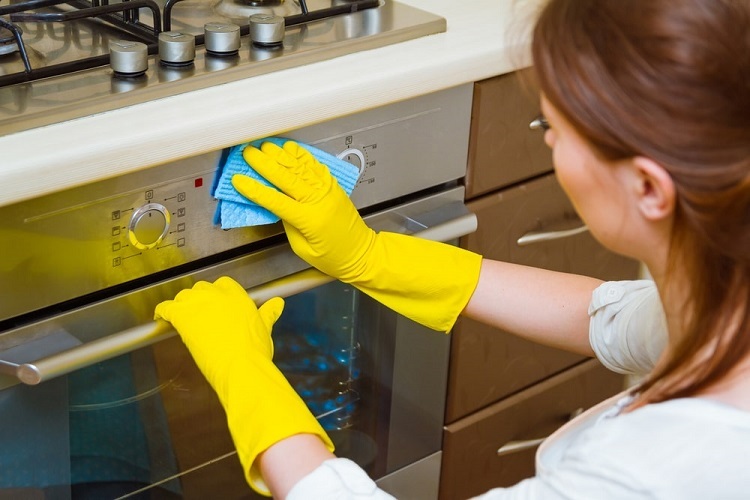When cleaning appliances aren’t working right, you initially figure out what’s wrong with them. Is the device simply malfunctioning, or is it already dead? If it’s the latter, you decide to toss it out or store it in the garage to rot.
There are times, however, when you’ve realized that all it needs is an inexpensive repair. But first, you need to know if there’s still a way to fix the problem yourself. The question is, can you do it? All you need is some troubleshooting skills. Find out the common issues of bond cleaning Brisbane appliances that can be easily fixed at home and how you can fix them on your own.
Table of Contents
Washing Machine
A malfunctioning washing machine might not be draining, spinning, cleaning your clothes properly, or turning on at all. For machines that aren’t draining, check the pump that mechanically drains water out. Debris can clog it up. Often, a torn piece of clothing can cause the problem. Access the pump and remove anything that’s causing it to get clogged up.
If your machine isn’t spinning, the motor belt may be out of place or worn down. You can access and replace it.
If you have a machine with an agitator (a post in the center of a washing machine), it could also stop spinning. Its directional cogs could be broken and need replacement, or your machine needs a reset. Check your machine’s instruction manual and look for the reset procedures.
If you have a front loader machine and it’s not turning on, make sure the lid switch is moving freely, without any obstruction. For top-loading machines, push the button with a pen’s blunt end while the machine is on and the lid is open. Debris that got clogged up in the switch will then be loosened and removed. You know this worked if your machine automatically begin filling water again.
For machines that aren’t cleaning clothes correctly, you could be overloading it with clothes and water. Maintain a higher ratio of water and less clothing. And did you know, too much detergent can damage your machine? Use less of it, and you’ll help save the environment, too.
Consumer Reports, however, advised that for machines that aren’t working entirely, the motor might be the problem. You can replace it, but the replacement for this can be expensive. Weigh your budget before deciding whether to buy a new machine or replace the motor.
Vacuum Cleaner
A vacuum cleaner can malfunction simply because of problems with its suctioning function. There are a few parts that you need to check for this. First, check the dust bag because it might just be full. If it is, empty it. Then, check the filters, hose, and brush roll. These parts could be clogged up with dirt and, often, hair. Remove what’s causing the clogging.
Sometimes, the problem is the height setting. You really can’t suction dirt if the vacuum is too high from the floor. If you’re cleaning hardwood or tiled floor, don’t use the deep carpet setting. Instead, use the bare floor setting.
Other times, the brush roll isn’t spinning, preventing your vacuum from sucking dirt. If you’ve already cleaned it and it’s still not spinning, the problem could be with its rotating belt. Replace it, and it will turn again.
However, if the problem with your vacuum is its power, you should bring it to a vacuum repair shop. If it’s turning on but not working or suctioning despite the solutions you previously applied, it needs to be checked by a professional.
Dishwasher
Common problems with malfunctioning dishwashers include not turning on, filling up, and draining. If your dishwasher is not turning on, ensure that the power switch is on, control is engaged, and the door is latched. If it still doesn’t work, push the reset button on the ground-fault circuit interrupter (GFCI) found on the power outlet.
There could be some problem with the water supply for dishwashers that don’t fill up or keep on filling. Check the water inlet valve. It could be clogged up. Clean it and place it back.
If your dishwasher is leaking, Home Tips advises that you may be using too much dishwashing detergent, there is a faulty door gasket, a hose is loosely connected, or your dishwasher wasn’t installed on a sitting level.
For dishwashers that aren’t draining, check the pump and drain hose. They could be clogged with food. If they’re clear, check your home’s drain lines. Maybe the clog is coming from there.
Before You Do Any Repairs
Check your appliances’ warranty first before repairing them. If you need help with troubleshooting, read the instruction manual or call the manufacturer’s service hotline. They can also provide you with information about getting replacement parts and where to bring your appliances for repair.
As you can see, if you know how to troubleshoot your cleaning appliances, you can do repairs on your own. Still, consult a licensed technician when you think you can’t do it.
